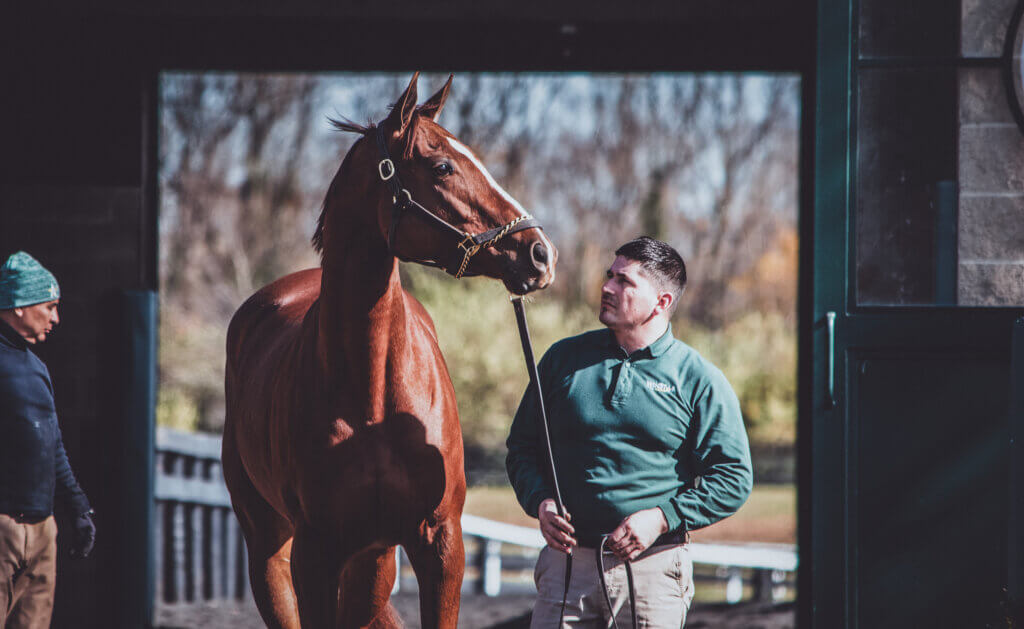The awe-inspiring spectacle of a racehorse at full gallop is a sight to behold. Their powerful lungs, large heart, and a spleen capable of releasing millions of stored red blood cells into the bloodstream during intense exercise make them the super athletes of the animal kingdom. However, there is a phenomenon that often sparks concern among spectators: a racehorse with blood in its nostrils. A better understanding of this can provide valuable insight into the welfare and performance of these majestic animals.
‘Bleeding’: EIPH versus Epistaxis
The key to appreciating why racehorses sometimes get nosebleeds lies in recognizing a condition known as Exercise Induced Pulmonary Hemorrhage (EIPH). Horses that experience EIPH are sometimes colloquially called ‘bleeders’. As the name suggests, this particular condition is initiated by exercise, and is not unique to horses but is experienced by human athletes as well.
The technical term “epistaxis” is applied when blood is visible at the nostrils.
Racehorses, in particular, exhibit an extraordinary heart size as a percentage of their body weight compared to other equine breeds and mammals. A Thoroughbred racehorse’s heart typically accounts for up to 1% of their body weight, while in humans it is around 0.55%.
A horse’s mean arterial blood pressure naturally increases almost five times during exercise, due to their large cardiac output.
A horse’s spleen holds a large reservoir of red blood cells and when it contracts fully, it dumps those cells into the circulating blood. This increases the total volume of blood in the horse’s circulation by 40%-50% when it races.
This, combined with a 5- to 6-fold increase in the horse’s heart rate results in a huge increase in the cardiac output, which is the amount of blood pumped every minute by the horse’s heart. The mean arterial blood pressure naturally increases almost five-fold during exercise, due to this massive cardiac output.
Under these conditions, the pressure inside the smallest blood vessels of the lungs – the pulmonary capillaries – inevitably also intensifies placing the thin walls of these capillaries under major stress.
When we breathe in, a negative pressure in our lungs is created by our diaphragm muscle, pulling air into our lungs. In horses at rest, this negative pressure is approximately negative 3mmHg, but during exercise, it increases to a staggering negative 40-50mmHg. When a racehorse gallops, its air movement during respiration can surge from approximately 80 liters of air per minute to more than 1800 liters/minute. This large negative pressure that sucks air into the lungs also has a sucking effect on the walls of the pulmonary capillaries.
Despite horses having stronger alveolar and pulmonary capillary walls compared to other species, these significant changes in air and blood pressure can cause blood leakage from broken blood vessels in most racehorses and some degree of EIPH results. It is because of these natural adaptations to high-speed exercise that horses get EIPH. In other words, it is not a disease.
The leaked blood is then transported up the trachea from the lungs. In a small percentage of cases (about 0.15% of starters), the bleeding is enough to enter the nasal passages and the nostril(s), giving the appearance of a nosebleed (epistaxis). This is an important distinction since it is this small group of horses that are subject to rulings under the Horseracing Integrity and Safety Authority (HISA) Anti-Doping & Medication Control and Safety Programs.
The Impact of EIPH on Racehorses
EIPH can have a deleterious effect on the performance of a racehorse. Horses experiencing epistaxis will be placed on the Veterinarians’ List and repeated episodes can result in a horse being barred from racing under HISA rules.
Horses generally recover well from a ‘bleeding’ episode and can easily transition to other less intense activities when they are retired from racing.
The strict rules around racehorses that experience epistaxis are important. Industry participants are motivated to prevent any degree of EIPH where possible as it may affect a horses’ welfare. Studies have shown that horses suffering from EIPH tend to exhibit decreased performance compared to non-bleeding horses. Horses generally recover well from a ‘bleeding’ episode(s) and can easily transition to other less intense activities when they are retired from racing.
Putting EIPH into perspective
The sight of a racehorse with a nosebleed can be unsettling and raise questions about the animal’s welfare. However, the strict measures in place within the racing industry and continued attention to this condition, should reassure us. The industry is acutely aware of the welfare of these incredible athletes and works diligently to ensure they are cared for at all times.
In summary, nosebleeds in racehorses, while concerning, are a well-documented and carefully managed part of the equine welfare initiatives within the racing industry. The integrity of horseracing rests on its commitment to the welfare and longevity of these remarkable animals.
Sources
Hinchcliff K. Exercise-induced pulmonary hemorrhage. In, Equine Sports Medicine and
Surgery, 3 rd Ed, Hinchcliff, Kaneps, Geor, Van Erck-Westergren. pp 753, 2024.
Persson SGB. On blood volume and working capacity in horses. Studies of methodology and
physiological and pathological variations. Acta Vet Scan Suppl 19: 1-189, 1967.
Birks EK, O. Mathieu-Costello O, Fu Z, Tyler WS. West JB. Comparative aspects of the
strength of pulmonary capillaries in rabbit, dog, and horse. Resp Physiol 97: 235-246, 1994.
Hopkins SR, Schoene RB, Henderson WR, Spragg RG, Martin TR, West JB. Intense
exercise impairs the integrity of the pulmonary blood-gas barrier in elite athletes. Am J Resp
Crit Care Med 155: 1090-1094, 1997.
Slocombe RF, Covelli G, Bayly WM. Respiratory mechanics of horses during stepwise
treadmill exercise tests: The effect of clenbuterol pretreatment. Aust Vet J 69: 221-225, 1992.
Kline H, Foreman JH. Heart and spleen weights as a function of breed and somatotype. In:
Equine Exercise Physiology 3, edited by Persson SGB, Jeffcott LB. Davis, CA: ICEEP Pubs,
1991, p. 17-21.
Hinchcliff KW, Jackson MA, Morley PS, et al. Association between exercise-induced
pulmonary hemorrhage and performance in Thoroughbred racehorses. J Am Vet Med Assoc.
2005; 227:768- 774.
Crispe EJ, Lester GD, Secombe CJ, et al. The association between exercise-induced
pulmonary haemorrhage and race-day performance in Thoroughbred racehorses. Equine Vet J.
2017; 49:584-589.
Bayly W. Exercise-induced pulmonary hemorrhage: An occupational hazard of high-speed
Exercise. Proc. AAEP 2021; 67, 465-468.



